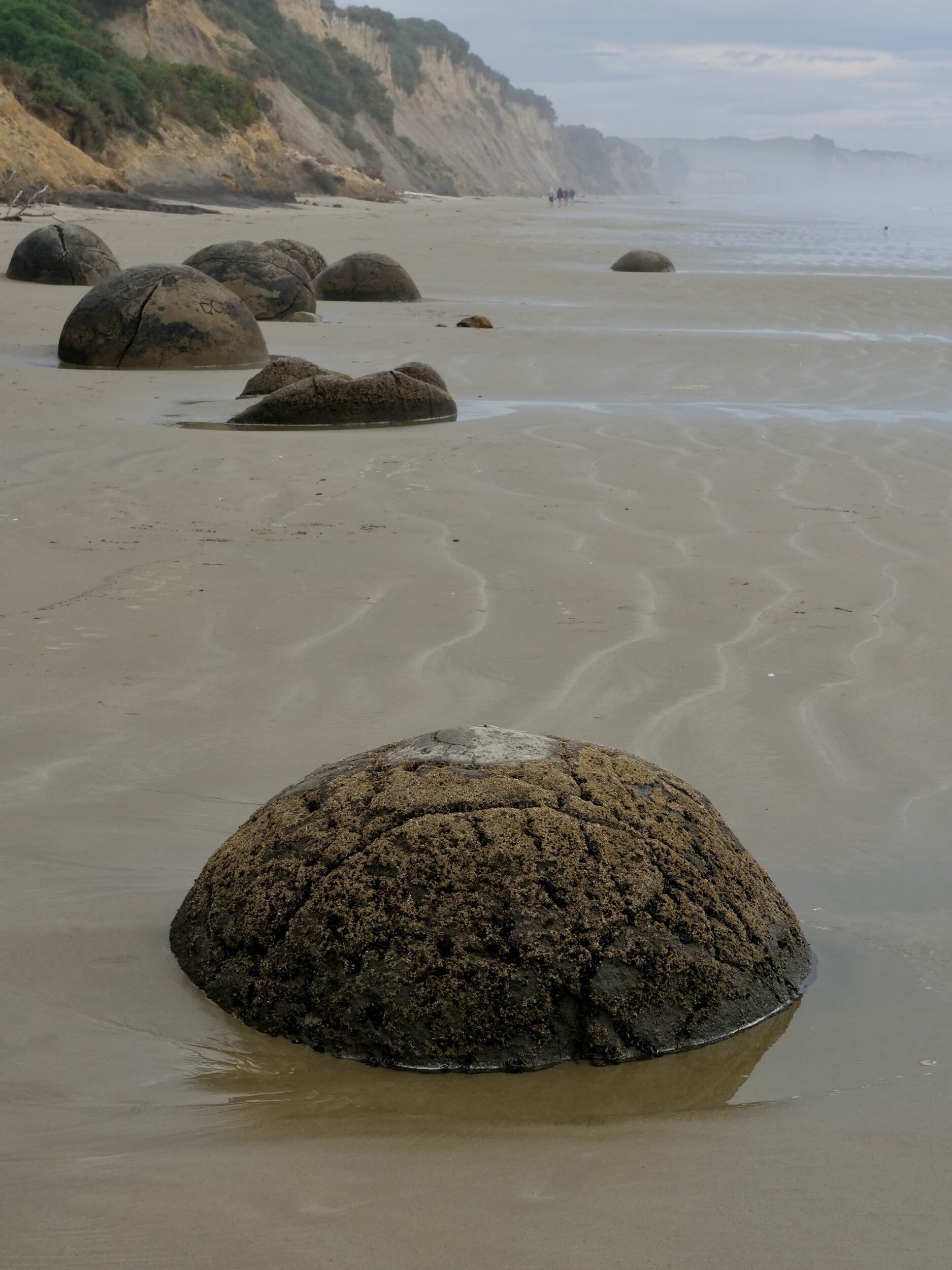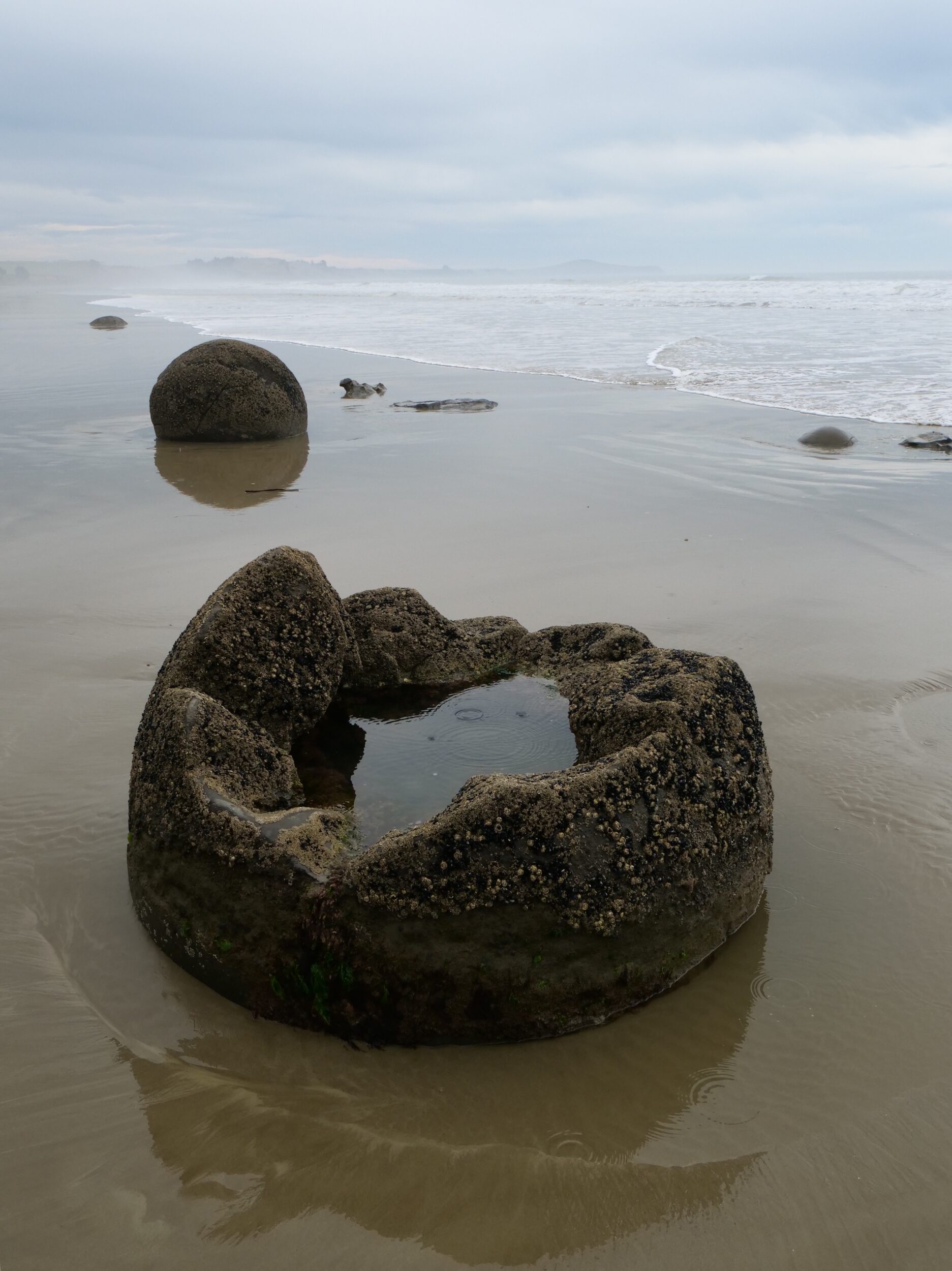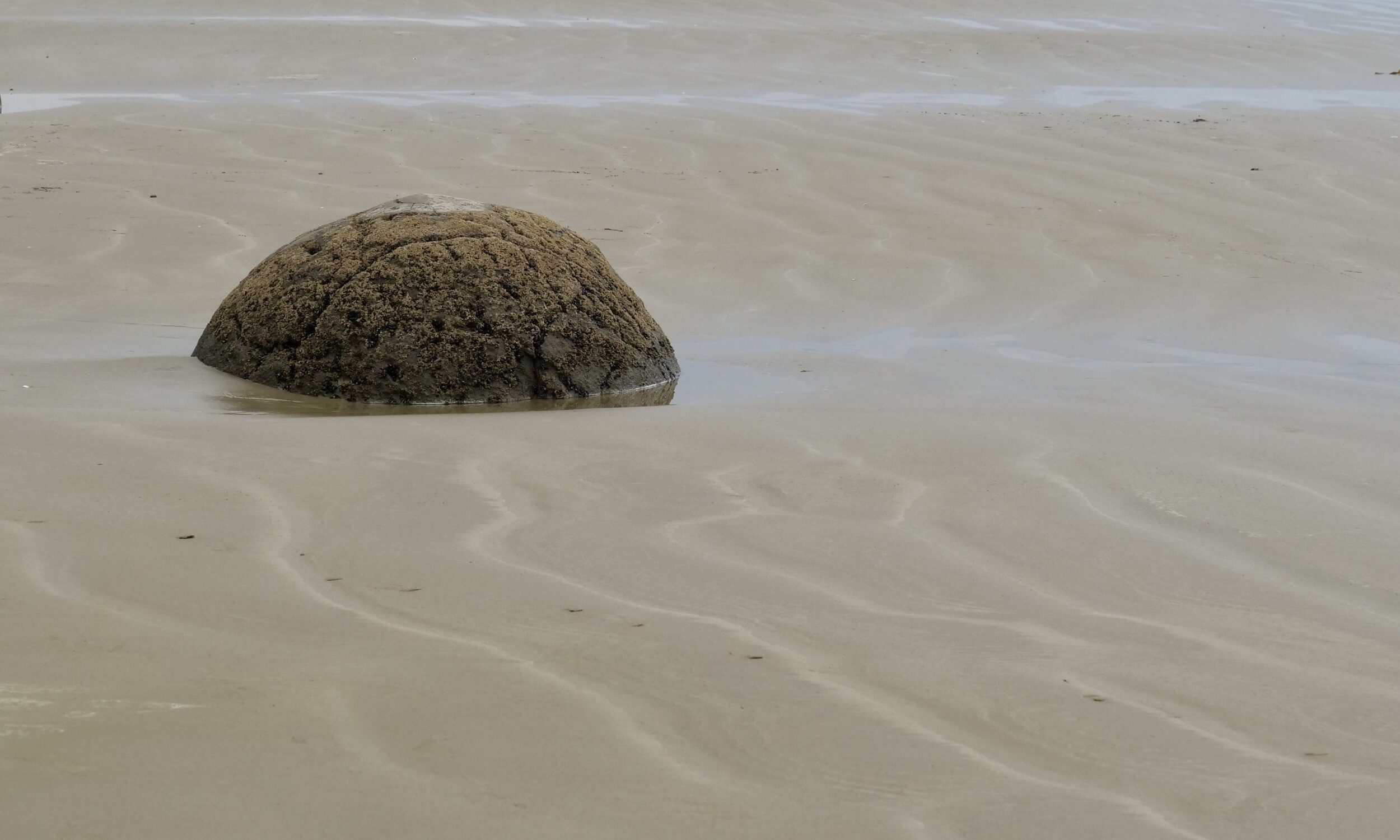Wet sand is often attractive in its own right.
Arguably, however, its greatest “talent” is its ability to enhance the beauty of whatever objects happen to be present within, atop, or above it…be they clouds, islands, shells, seaweed, crustaceans, birds, pebbles…or – in this instance – some wonderfully weird boulders on the Otago coast of New Zealand’s South Island.

Although they are certainly the most famous example of their type, the Moeraki (aka “Kaihinaki”) Boulders are not unique; there are similar, large, quasi-spherical concretions on other shores, in New Zealand, and other nations.
They are mostly mud, fine silt and clay, cemented by calcite
Precisely how their “concretion” happened – and how cracks developed in them, and “veins” appeared in some of them, are still not fully known/agreed upon.

According to the Moeraki Boulders’ Wikipedia entry:
The Moeraki Boulders are concretions created by the cementation of the Paleocene mudstone of the Moeraki Formation, from which they have been exhumed by coastal erosion. The main body of the boulders started forming in what was then marine mud, near the surface of the Paleocene seafloor. This is demonstrated by studies of their composition; specifically the magnesium and ironcontent, and stable isotopes of oxygen and carbon. Their spherical shape indicates that the source of calcium was mass diffusion, as opposed to fluid flow. The larger boulders, 2 metres (6.6 ft) in diameter, are estimated to have taken 4 to 5.5 million years to grow while 10 to 50 metres (33 to 164 ft) of marine mud accumulated on the seafloor above them. After the concretions formed, large cracks known as septaria formed in them. Brown calcite, yellow calcite, and small amounts of dolomite and quartz progressively filled these cracks when a sea level drop allowed fresh groundwater to flow through the mudstone enclosing them.[1][3][4
As it happens, exactly one year earlier, on 25 March 2018, my beloved and I walked along the wet sands of a remote, southwest Tasmanian shore.
It, I think, is an even more beautiful place; click here to see its multi-image post, and this for a post that includes a footprint left by a four-footed Tasmanian “beachcomber”.
The next several chapters in this Grand sands series will consider critters who spend their lives – or at least much of them – living on sand, and/or within it.
